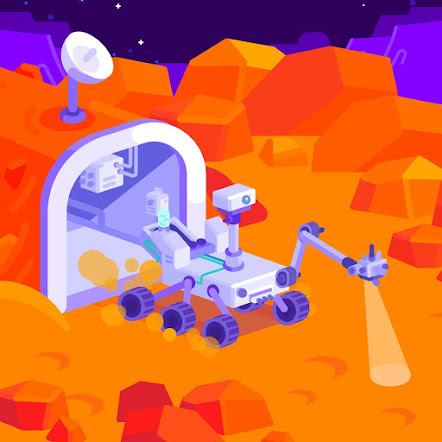It was much touted on the NASA and independent media channels that of the approximately 40 missions to Mars, only 40% of those have successfully landed and operated. Today Perseverance has beat those odds by leveraging novel telemetry systems and a sky crane to be guided gently to the surface.
Not only does this highlight that these systems work - it means that they can be redeployed on future missions, leveraging a proven platform. This will lower development costs for future missions and increase the probability of success too. This is in the same vein of continuous improvement that SpaceX follows in their development of Starship, and soon to come Superheavy prototypes.
There was a real atmosphere, contrasting the thin CO2 present on Mars. There was some tension in the air as the mission lead Swati Mohan talked through the progress of the mission as it approached the surface. Her tone changed to somewhat positive chatter as it became clear that the landing systems encountered concurrent successes. This gave way to open celebrations from the whole of the crew. After hearing the way she led the crew in this short televised view into NASA missions, I truly feel she has set in motion some future astronauts, scientists and engineers.
Moments like these do inspire young people. I myself was inspired by seeing scientists and engineers doing amazing things in chemical processing and offshore energy and manufacturing. Growing up i was fascinated by the energy industry, oil and gas. I have been lucky enough to work in energy, in an increasingly end-customer focused capacity for the last decade.

Swati Mohan - Lander Guidance and Operations Team Lead, JPL. Credit: NASA
JPL Perseverance Lander team. Credit: VICE stream
After all, it was the challenges in our lives for which Perseverance was named to remind us that there is value in staying the course, and looking up to move forward.
Indeed this landed did move forward, at a pace of 7.6 km / s until it started to enter the thin martian atmosphere. Once down on the surface, the various cameras started to send back early images of the nearby landing area within the Jezero crater.
Hearing over the intercom of the Jet Propulsion Lab (JPL) team, Perseverance is approximately 30 m from the nearest decent rock where it can conduct some science.
I personally watched the feed with a mission specialist whose knowledgeable commentary was a delight to watch and listen to. @Elakdawalla gave a passionate and engaging narrative over a split-screen between Emily's own contribution on VICE channel and the live JPL ops centre camera.
During the feed, the images cut between the ops centre and the NASA-supplied computer generated real-time simulation of the journey of Perseverance. Emily rounded off her account of the successful landing with some commentary related to the required OS upgrade to replace the software for landing with the software for roving. In a future segment, we will look at how OS and software for space vehicles has changed over time, high level philosophy and what the future can hold for this. We will explore what lessons have been learned from existing projects, especially that human habitation will soon come to rely long term on computerised life support systems for multiple years.
You can reach me live on social media: Twitter @Ronnie_Writes







Comments
Post a Comment